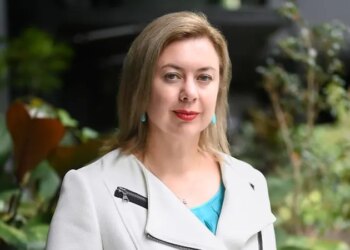Bryce Figot, special counsel for DBA Lawyers, said it depends on an examination of all the relevant documentation, noting that each supplier’s documents differ in certain respects.
“There is a misconception that reversionary pension documentation will always apply before a binding death benefit nomination,” he said.
“If the SMSF deed is silent on the question, it can be entirely possible at times that the binding death benefit nomination will apply before any reversion pension documentation.”
He said the reasoning has to do with several often-overlooked laws.
“If the SMSF deed provides that reversionary pension documentation overrides any BDBN, that may be the case for that particular SMSF. However, that might not be in anyone’s best interests, and could result in significant liability for advisers.”
Figot continued that one case in point, Dagenmont Pty Ltd v Lugton [2007] QSC 272, concerned the trustee of a discretionary trust that executed an instrument stating that it would pay a person $150,000 annually. The validity of this was challenged.
Chesterman J summarised the law behind the challenge as follows:
According to the Law of Trusts and Trustees by Underhill and Hayton 16th edition, page 690:
“… it is trite law that trustees cannot fetter the future exercise of powers vested in trustees ex officio … Any fetter is of no effect. Trustees need to be properly informed of all relevant matters at the time they come to exercise their relevant power.”
Meagher and Gummow in Jacobs’ Law of Trusts in Australia 6th edition paragraph 1616 say:
“Trustees must exercise powers according to circumstances as they exist at the time. They must not anticipate the arrival of the proper period by … undertaking beforehand as to the mode in which the power will be exercised in futuro.”
Professor Finn (as his Honour then was) in his work Fiduciary Obligations wrote in paragraph 51:
“Equity’s rule is that a fiduciary cannot effectively bind himself as to the manner in which he will exercise a discretion in the future. He cannot by some antecedent resolution, or by contract with … a third party – or a beneficiary – impose a “fetter” on his discretions.”
Finkelstein J summarised the position in Fitzwood Pty Ltd v Unique Goal Pty Ltd (in liquidation) [2001] FCA 1628 (para 121). His Honour said:
“Speaking generally, a trustee is not entitled to fetter the exercise of discretionary power (for example a power of sale) in advance: Thacker v Key (1869) LR 8 Eq 408; In Re Vestey’s Settlement (1951) ChD 209. If the trustee makes a resolution to that effect, it will be unenforceable, and if the trustee enters into an agreement to that effect, the agreement will not be enforced (Moore v Clench (1875) 1 ChD 447), though the trustee may be liable in damages for breach of contract …”
Figot said advisers should also be comfortable with the way the documents they use are drafted and they understand the legal risk and implications using them entails.
“In particular, advisers should ensure the strategies in the documents they supply their clients are legally effective and are supported by relevant legislation, case law or similar authority,” he said.
“An adviser procuring a document, for instance, from a web-based supplier is implicitly warranting that it is suitable for their client’s use which is why advisers need to be careful on what document supplier they use.”
He continued that if the SMSF deed is silent, there is a strong argument that the BDBN overrides any conflicting pension reversion nomination.
“However, there are certain SMSF deeds that expressly specify that a pension reversion nomination such as a resolution in pension commencement resolutions prevails over any conflicting BDBN. In that circumstance, there is a fair chance that a pension reversion nomination may prevail over a conflicting BDBN,” Figot said.
He gave an example of an SMSF member who wants a pension that automatically reverts upon death where the existing pension documentation is silent.
“Where the SMSF’s governing rules do not provide that the BDBN overrides the pension documentation or if the SMSF’s governing rules provide that the pension documentation overrides the BDBN, a common approach is to fully commute each pension and commence new pensions with documentation that provides that the pension automatically reverts,” Figot said.
“However, this process requires further steps and consideration of issues including, satisfying pension minimums before commuting; determining market values of superannuation interests and Transfer Balance Account reporting.”
Additionally, it has to consider the implications of mixing tax-free and taxable components if the member also has an accumulation interest in the SMSF and/or multiple pensions, as well as documenting the commutation and commencement of pensions.
Further, advising on the commencement of a pension may also raise AFSL implications for the accountant or adviser.
“Also, the ATO has expressed a strict view in TR 2013/5 on when a pension is automatically reversionary. Not all document suppliers and accounting software can generate pension documentation that guarantees that a pension is automatically reversionary,” Figot said.
“A brief resolution after the pension documentation is executed might not be enough to change the ‘reversionary’ status of the pension.”
A contrasting example considers the approach where the SMSF’s governing rules provide that the BDBN overrides the pension documentation.
In this circumstance, an SMSF member wants a pension that automatically reverts upon death. The existing pension documentation is silent as to whether it automatically reverts.
“Assume that the SMSF’s governing rules provide that the BDBN overrides the pension documentation and can also allow for a BDBN to make a pension reversionary ‘mid stream’,” Figot said.
“The template BDBN form provides an option to tick. If ticked, it means all the member’s account-based pensions and transition to retirement income streams that they are receiving just before their death are automatically reversionary to the member’s spouse. When completing the BDBN form, the member ticks this box to select this option.”
He continued that as the BDBN covers all the member’s pensions, this strategy is effective in terms of cost and legality.
“Naturally, the wording in the documentation is extremely important to enable a BDBN to override the pension documentation.”
“In particular the SMSF’s governing rules must expressly provide for reversion and for a BDBN to be able to make a pension reversionary mid-stream. They must also expressly provide that the BDBN overrides the pension documentation. The wording in the BDBN in relation to the ‘automatically reversionary’ option must comply with TR 2013/5 in that it must fetter the SMSF trustee’s discretion in relation to paying the member’s pensions upon the member’s death.”
Figot concluded that the safest and best-practice approach is to check that the pension documentation and the BDBN are consistent.
“However, a BDBN taking priority over pension documentation should be the preferred approach for SMSF members.”
“Accordingly, there is merit in obtaining SMSF documents, including SMSF governing rules, that support this approach, which can act as a safeguard where there is any inconsistency between the pension documentation and BDBN.”



Bryce
Your statement below
“However, a BDBN taking priority over pension documentation should be the preferred approach for SMSF members.”
I am sorry, I do not agree with you.
It is for the advisor to ensure that death benefits documents are as per the wishes of the member – reversionary or non-reversionary pension documents are a great tool to have.
Secondly it is the TSB of the member and the reversionary beneficiary which determines which strategy is best for the member and the members beneficiaries (spouse / adult children / disabled adult children etc). Simply giving contol to only one document – in your preferred document a BDBN – will be limiting the strategies available.
I feel a combination – pension documents and a BDBN should both be used. Pension documents for the pension assets and a BDBN for accumulation assets. If you use only BDBN – then every year you will need to keep amending due to change of circumstances. Whereas if you use pension documents and a BDBN for different superannuation interests of the member and have the governing rules giving effect to the various relevant documents of the member – you will end up with a better outcome and perhaps fewer amendments due to change of circumstances.